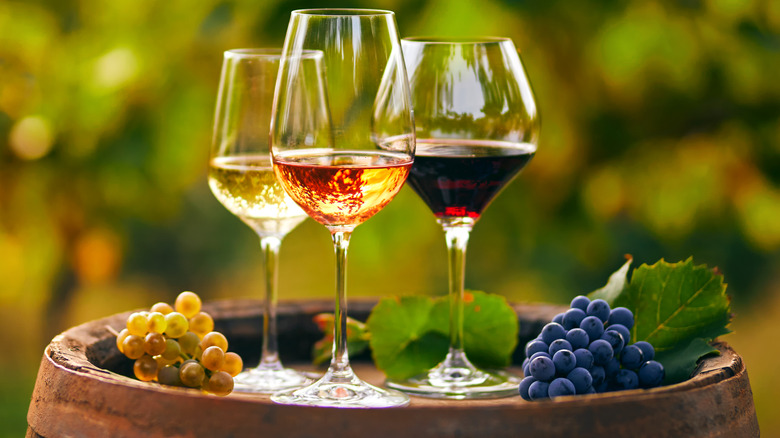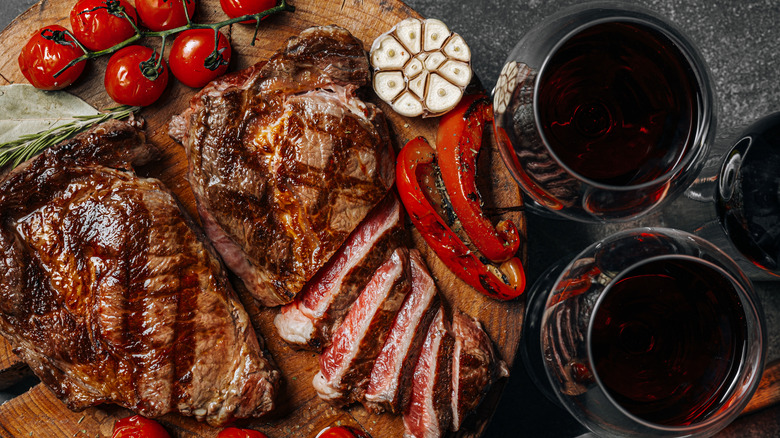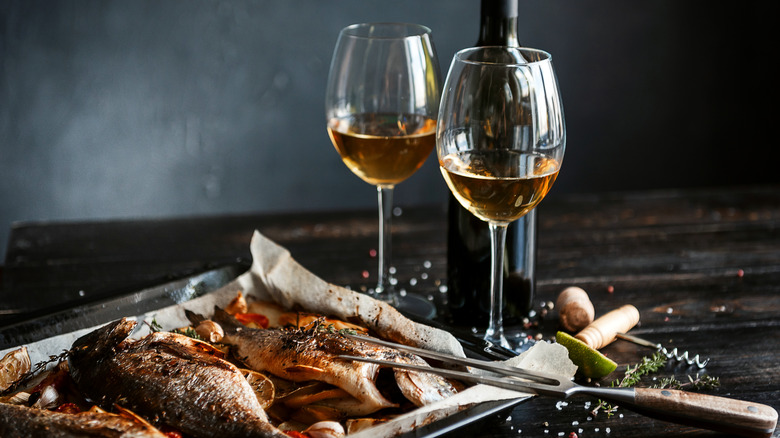The Wine Pairing Myth You Should Stop Believing
We're all familiar with the concept that certain foods pair perfectly with one another. Certain dishes have found precisely the right balance of complimentary tastes and textures, and as a result, have become ubiquitous fixtures of American cuisine. In macaroni and cheese, the tubular macaroni noodles are the perfect receptacles for delicious cheese sauce (via Restaurant Clicks). Peanut butter and jelly sandwiches bring together savory and sweet flavors and plates of chicken and waffles do the same.
But mac n' cheese and pb&js are for the kid's table. What about serving spirits with your snacks? MasterClass explains that gin pairs nicely with seafood, and if you're eating something meatier, you should be drinking a strong, whiskey-forward drink, like the standard old-fashioned cocktail.
Everyone knows that wine is great alongside a meal. However, it's easy to get wrapped up in the laundry list of rules that have been applied to choosing a wine pairing. If you ignore one of the most commonly-held beliefs about what wines go with which foods, you can open yourself up to many new varieties of vino.
Should you have red or white wine with dinner?
Wine expert Dr. Vinifera of Wine Spectator, in response to a reader's submitted query, explains that there is some amount of truth behind the notion that you should pair red wine with meat, and white wine with fish. They go on to explain that the tannic attributes of red wine are beautifully balanced out by the fattiness of the meat, and that white wine adds a kick of acidity that brings your seafood to the next level. Fnding a properly acidic wine is one of the 13 essential wine pairing tips. For example, the full-bodied red wine Malbec is what celebrity chef Aarón Sánchez likes to serve at his barbecues.
However, though the validity of these flavor pairings is undeniable, limiting yourself to one type of wine when serving dinner could potentially, in certain circumstances, lead to less desirable taste profiles. As evidence, PureWow suggests that powerfully-flavored seafood dishess might be better complimented by a light red, while light meats like pork and chicken might hold up better against a glass of white wine.
Exceptions to the general rules of wine pairing
Wine distributor Millesima dives head first into the wine pairing controversy. They explain that when pairing wine with pork, which is neither red nor white meat, your decision should be influenced by the cut in question. While some pork dishes, like pork belly, should be paired with dry white wine, other options, like the bold barbecue rib and succulent sausage, would taste great with a glass of red.
According to Wine Enthusiast, you can also shake up the conventional practice of pairing white wine with seafood. When you're slicing into filets made out of fatty fish like swordfish and tuna, a bold red might be required to keep the meal afloat. However, lighter seafood plates can still be complemented by red wine, particularly dry rosé and Pinot Noir.
One of the most flagrant violations of the red and white pairing rules comes at the hands of Master Sommelier Barbara Werley, who works for Pappas Brothers Steakhouse (per Forbes). She recommends that diners order balanced white wines alongside their steaks, as she feels that the acidity of white wine works wonders when contrasted with the richness of the beef.
So, the next time you find yourself ordering a red wine because you were told it pairs nicely with your dinner, we suggest taking a stance and ordering a white instead.


